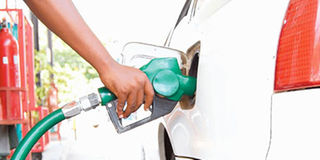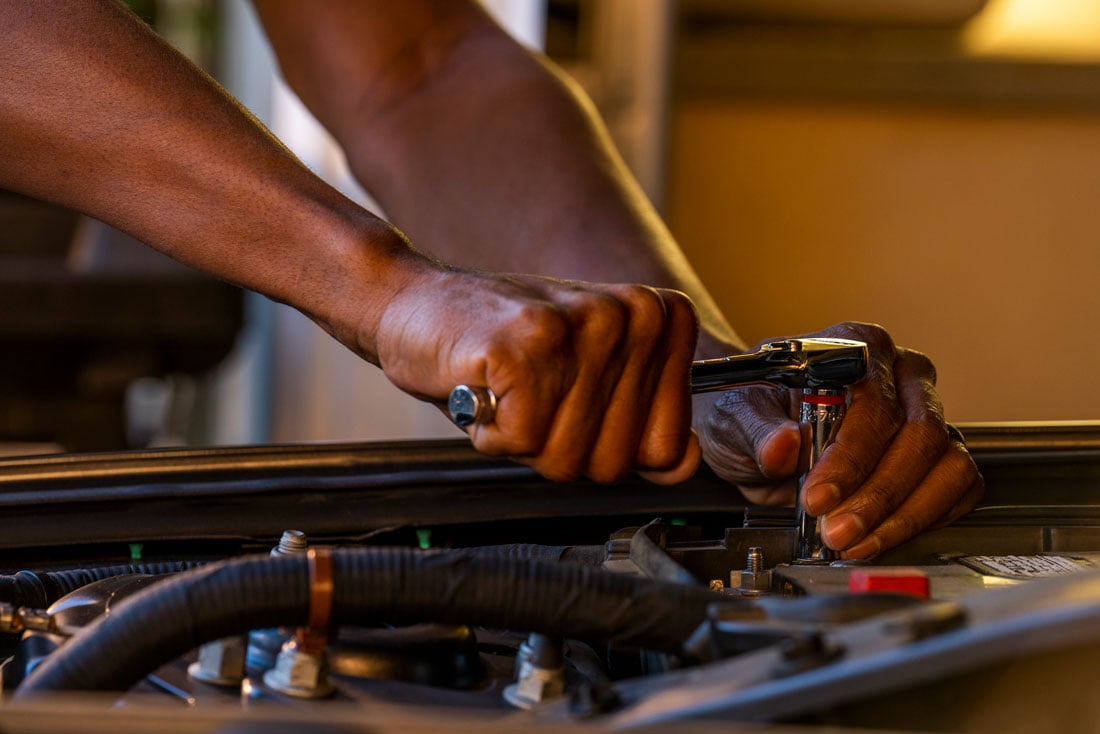Why fuel prices in E. A are different

A pump attendant fills up a vehicle at fuel station recently. Fuel prices continue to be high even as global oil prices continue to fall.
What you need to know:
High prices. Fuel is more expensive in Rwanda, Burundi and Kampala due to transport costs and internal taxes, according to experts.
As global oil prices continue to plunge, with the latest projections putting a barrel at below $46 by April, consumers in East Africa might take longer before they can feel the trends at the international markets.
Pumps prices in East Africa have been dropping but at a very minimal pace. Whereas fuel prices in Kenya, Tanzania and Rwanda have dropped by Shs500, in Uganda they have oddly fallen by Shs250.
A survey conducted by Tanzania-based The Citizen, Daily Monitor’s sister newspaper, across five East African countries, indicates fuel prices are lowest in Kenya followed by Tanzania and more expensive in Rwanda, Burundi and Uganda. For instance, in Kampala, a litre of petrol is retailing for Shs3,631 ($1.25), diesel Shs3,195 ($1.1) and kerosene 2,672 ($0.92).
Minimal price difference
Uganda imports most of its fuel through Mombasa, some 1,000 kilometres away, but the price difference with Dar es Salaam and Mombasa, where transport costs are at a minimum, is minimal. However, Dr Adam Mugume, the Bank of Uganda director for research is optimistic that fuel prices might have to fall in reaction to a drop of what government spends on oil related imports.
Uganda on average spends Shs326b ($100m) per month; however this is expected to fall by more than 50 per cent next month.
“Indicators show that this could decline by 50 per cent in the coming months, which would boost trade balance,” Dr Mugume says.
Similarly, Mr Peter Ochieng, the general manager Hashi Energy attributes the price disparity across East Africa to transport and tax cost since Uganda is a landlocked country.
“Transporting fuel from Eldoret-Kisumu to Kampala costs $50 for every cubic litre. Additionally, the excise duty we pay is higher compared to Kenya or other East Africa countries.”
Fuel taxes in Uganda
Uganda fuel dealers pay Shs52 in Excise Duty for every litre of petrol and Shs80 for every litre of diesel.
In Kenya’s port city of Mombasa, petrol, diesel and kerosene all sell for the equivalent of under $1 a litre (Shs2, 905).
Petrol is sold in Mombasa at Shs2, 846 ($0.98), diesel at Shs2, 527 ($0.87) and kerosene at Shs1, 975 ($0.68).
In Nairobi, Kenya a litre of petrol sells at Shs2,934 ($1.01), diesel at Shs2,614 ($0.90) and kerosene Shs2,091 ($0.72).
In Dar es Salaam, Tanzania a litre of petrol costs Shs3,340 ($1.15), while diesel and kerosene are capped at Shs3,137 ($1.08) and Shs3, 108 ($1.07) respectively.
Fuel is more expensive in Rwanda and Burundi with petrol selling for Shs3, 776 ($1.3) and Shs3, 427 respectively. The bulk of fuel used in the five landlocked countries is imported through Dar es Salaam and Mombasa, and transport costs form a significant part of pump prices.
Comparing data
According to mytravelcosts.com, a website which compiles travel cost comparison data – including those related to hotels and restaurants, shopping, entertainment and transport – across countries, Burundian consumers spend an average of Shs3,427 ($1.18) to buy a litre of petrol.
Prices are highest in Kigali, where a litre of petrol retails for Shs3,776 ($1.3).
Beyond East Africa in Lusaka, Zambia and Lilongwe in Malawi are some of the most expensive places for motorists, with a litre of petrol retailing for Shs4,415 ($1.52) and Shs5083 ($1.75) respectively.
Analysts say differences in prices between Tanzania and Kenya – small as they are – are influenced by local charges. “I think the difference in prices is due to tax charges in the respective countries,” says Prof Samuel Wangwe, the executive director of Policy Research for Development.
Comparatively high fuel prices across East Africa are blamed on the long duration of up to two months it takes for imported fuel products to be supplied.
In Uganda for instance, fuel dealers sometimes have to run on stokes of about or more than four months, which explains the slow movement of price cuts even when oil prices are rapidly falling internationally.
Fuel prices across east africa
Country Petrol Diesel Kerosene
Kenya (Nairobi) Shs2,934 Shs2,614 Shs2,091
Tanzania (Dar es Salaam) Shs3,340 Shs3,137 Shs3,137
Uganda (Kampala) Shs3,631 Shs3,195 Shs2,672
Burundi Shs3,427 - -
Rwanda Shs3,776 - -
Comment:
Unlike other East African countries, Uganda does not have a regulatory authority to control the movement of fuel prices and other related products.
This, according to analysts, partly explains the lack of uniformity in pump prices and the snail paced movement of fuel prices southwards, even when global crude prices are rapidly plunging.
Kenya, Uganda’s neighbours in the east, has the Energy Regulatory Commission while Tanzania in the South, has the Energy and Water Utilities Regulatory Authority. Rwanda has a Utilities and Energy Regulatory Authority, which among others controls movement of fuel prices. The above agencies have in the last few months been at the centre of ensuring, however minimal, that pump prices drop to reflect global crude movements.
Crude oil prices have since June dropped from about $120 (348,600) to an average of $50 (145,250).
Mr Justinian Kateera, the executive director of the Institute of Public Policy Research thinks the current predicament should encourage the government to establish a regulatory authority. But Mr Han Paulsen, the Vivo Energy Uganda managing director, says fuel dealers, to a certain degree observe self-regulation and often react to market dynamics. “…we are not profiteers. We are mindful of consumer needs in our operations,” he says.
[email protected]
Additional Reporting by Abdulaziizi K. Tumusiime.




